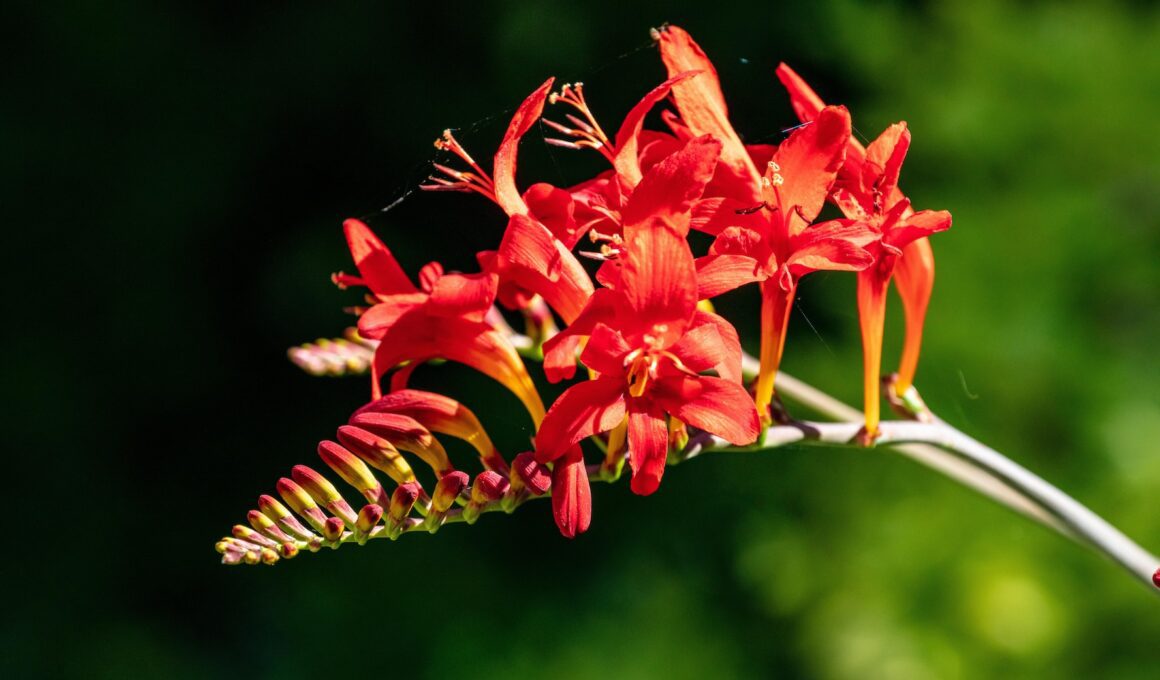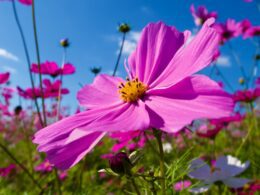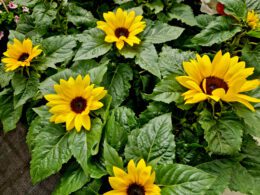Do you have crocosmia plants in your garden? If so, you may be wondering whether you should cut them back in autumn.
Crocosmia, also known as Montbretia, is a popular plant that produces beautiful, vibrant flowers in shades of red, orange, and yellow. While it’s relatively easy to care for, many gardeners are unsure about the best way to maintain their crocosmia plants, especially when it comes to pruning.
Cutting back crocosmia in autumn is a common practice among gardeners. It’s a way to tidy up the plant and prepare it for the winter months. However, there are risks associated with this practice, and it’s important to understand the reasons for cutting back crocosmia and the alternatives available to you.
With a little knowledge and care, you’ll be able to keep your crocosmia plants healthy and thriving for years to come.
Understanding Crocosmia Plant Care
Learn how to properly care for your crocosmia plants and keep them healthy all year long! Crocosmia plants are known for their colorful and vibrant blooms that add a pop of color to any garden or landscape. They’re relatively easy to care for, but there are a few things you should know to ensure their health and longevity.
When it comes to propagation techniques, crocosmia plants can be divided and transplanted in the spring or fall. This is a great way to increase your plant collection or share with friends. To ensure successful transplants, choose a location with well-draining soil and plenty of sunlight. Crocosmia plants prefer soil that’s slightly acidic and rich in organic matter.
In terms of soil requirements, it’s important to note that crocosmia plants don’t like to be overwatered. They prefer soil that’s moist but not waterlogged. To help with drainage, you can add perlite or sand to the soil. Additionally, it’s a good idea to mulch around the base of the plant to help retain moisture and suppress weeds.
By following these simple care tips, your crocosmia plants can thrive and provide beautiful blooms year after year.
Reasons for Cutting Crocosmia Back
Trimming back the foliage of these fiery-hued perennials during the cooler months provides several benefits for their growth and overall appearance. You might be tempted to leave the foliage intact, but cutting back your crocosmia plants in autumn will give them a better chance of thriving come spring. Here are some reasons why you should consider cutting back your crocosmia:
-
Promotes healthy growth: Trimming back the dead and dying foliage helps the plant to redirect its energy towards new growth. This way, your crocosmia will grow stronger and healthier, with a better chance of blooming beautifully in the next season.
-
Prevents disease: Dead or dying foliage can attract pests and diseases, which can spread to healthy parts of the plant. By cutting back the foliage, you’ll be removing any potential breeding grounds for pests and diseases.
-
Aesthetically pleasing: Crocosmia plants have a tendency to become unruly and overgrown, which can detract from their overall beauty. By trimming back the foliage, you’ll be creating a more compact and tidy appearance that will enhance the beauty of your garden.
-
Timing is key: It’s important to cut back your crocosmia at the right time. Wait until the foliage has died back naturally, usually after the first frost. This way, you’ll be able to cut back the foliage without damaging the plant or interfering with its natural growth cycle.
In summary, cutting back your crocosmia in autumn has many benefits for the health and appearance of your plant. By doing so, you’ll be promoting healthy growth, preventing disease, and creating a more aesthetically pleasing garden. Just remember to wait until the foliage has died back naturally, and you’ll be on your way to a beautiful and thriving crocosmia plant.
Is Cutting Back Plants in Autumn Necessary for Their Growth?
Cutting back begonias in autumn is a beneficial practice for ensuring their regrowth. While it may seem counterintuitive, pruning the plants helps redirect their energy towards root development and strengthens the overall structure. By removing dead or diseased parts, the process stimulates new growth, allowing begonias to flourish in the upcoming seasons. Hence, will cutting begonias promote regrowth? Absolutely! It’s a vital step towards ensuring healthier and more vibrant plants.
Risks of Cutting Crocosmia Back
If you want to keep your crocosmia healthy and beautiful, it’s important to be aware of the potential risks that come with pruning them during the cooler months.
While it may seem like the perfect time to tidy up your garden, cutting back your crocosmia too early can actually harm the plant. This is because crocosmia stores its energy in its leaves and stems during the autumn and winter months, which helps it to flower in the following season.
By pruning your crocosmia too early, you risk removing the very parts of the plant that will help it to thrive in the spring and summer. To avoid this, it’s important to wait until the right time of year before you start pruning. Typically, you should wait until late winter or early spring before you start cutting back your crocosmia. This will give the plant enough time to store up energy for the coming season, while also allowing you to remove any dead or damaged growth.
When it comes to pruning your crocosmia, it’s important to use the right techniques to avoid damaging the plant. Start by removing any dead or damaged growth, cutting back to healthy, living tissue. You can also thin out any overcrowded or weak stems to promote healthy growth. Just be careful not to remove too much of the plant at once, as this can weaken it and make it more susceptible to pests and diseases.
By following these simple tips, you can ensure that your crocosmia stays healthy and vibrant year after year.
Alternatives to Cutting Crocosmia Back
Looking for ways to keep your crocosmia looking great without trimming it back in the autumn? Consider adding other plants to your garden that can complement and enhance the beauty of your crocosmia, such as colorful annuals or perennials. By planting a variety of plants that bloom at different times of the year, you can create a stunning and diverse garden that requires less maintenance.
Additionally, planting herbs and flowers that naturally repel pests can help keep your crocosmia healthy without the use of harmful pesticides. Mulching techniques can also be an effective alternative to cutting crocosmia back in the autumn. By adding a layer of organic material, such as leaves or grass clippings, to the soil around your crocosmia, you can help retain moisture and suppress weeds. This will not only help keep your crocosmia healthy, but it will also save you time and effort in the long run by reducing the need for frequent watering and weeding.
When it comes to natural pest control, there are many options available that can help protect your crocosmia without the use of harmful chemicals. Companion planting is a technique that involves planting certain plants together to help repel pests and attract beneficial insects. For example, planting marigolds or chives near your crocosmia can help keep aphids and other pests at bay. Additionally, using homemade remedies, such as garlic spray or neem oil, can help control pests without harming your crocosmia or the environment.
By using these alternatives, you can keep your crocosmia looking beautiful and healthy, while also promoting a safe and sustainable garden.
Is It Necessary to Cut Crocosmia Back In Autumn Before Transplanting Daylilies?
Yes, it is necessary to cut Crocosmia back in autumn before transplanting daylilies. This will help the daylilies receive more sunlight and nutrients. When transplanting daylilies, it’s important to follow specific guidelines for optimal results. These transplanting daylilies tips will ensure a successful relocation process for your plants.
Conclusion and Final Thoughts
By adding a variety of complementary plants and using natural pest control methods, you can maintain the health and beauty of your crocosmia garden without having to resort to trimming it back in the fall. Leaving your crocosmia uncut has its benefits. For one, it allows the plant to store energy for the next growing season. Furthermore, it also provides food and habitat for wildlife such as birds and bees.
If you do need to transplant your crocosmia, the best time to do so is in the fall. This is because the plant is dormant during this season, making it less vulnerable to stress and damage. Be sure to dig up the entire clump and replant it in well-draining soil with enough space around it to allow for growth. Water it thoroughly and add a layer of mulch to help protect it during the winter months.
In conclusion, trimming back your crocosmia in the fall is not necessary and can actually be detrimental to the health of the plant. By leaving it uncut, you provide a natural source of food and shelter for wildlife while also allowing the plant to conserve energy for the next growing season. And if you do need to transplant your crocosmia, the best time to do so is in the fall when the plant is dormant.
With a little care and attention, your crocosmia garden can thrive without the need for excessive trimming.
Frequently Asked Questions
Can crocosmia survive winter without being cut back?
If you’re worried about your crocosmia surviving the winter, there are a few overwintering techniques you can use to increase their chances of making it through.
One important technique is mulching, which helps to insulate the soil and protect the plant’s roots from freezing. Spread a layer of organic mulch, such as leaves or straw, around the base of the plant before the first frost. This will also help retain moisture and prevent the soil from drying out.
It’s best not to cut back the foliage in the fall, as it can provide some protection against cold temperatures.
With the right care and attention, your crocosmia can survive the winter without being cut back.
How often should crocosmia be divided?
The best time to divide crocosmia bulbs is in the spring or early fall before the first frost. To divide the bulbs, carefully dig them up and separate the clumps with your hands or a sharp knife. Make sure each clump has a healthy shoot and root system.
Replant the divided bulbs in a well-draining soil and water them thoroughly. After dividing, it’s important to care for crocosmia properly by providing adequate water and fertilization. Keep the soil moist but not waterlogged and fertilize with a balanced fertilizer every two to three weeks.
With these techniques for dividing crocosmia bulbs and caring for them after division, you can ensure a healthy and thriving plant for years to come.
Can crocosmia be grown in containers?
Looking to add some color to your patio or balcony? Crocosmia, also known as Montbretia, can be grown in containers and is a great addition to any container garden.
When planting crocosmia in a container, make sure to use well-draining soil with a pH level between 6.0 and 7.0. Crocosmia prefers moist soil, so be sure to water regularly, especially during hot, dry weather.
With proper care, crocosmia will bloom in the summer and fall, adding a burst of color to your outdoor space. Container gardening is a great way to bring a little bit of nature to your home and crocosmia is a perfect choice for a vibrant and low-maintenance addition to your container garden.
How much sun does crocosmia need to thrive?
For crocosmia to thrive, it needs a lot of sunlight. However, partial shade can work as well, especially in hot and dry climates where too much sun can be damaging.
If you’re growing crocosmia in containers, make sure they’re in a sunny spot where they can receive at least six hours of sunlight per day. When planting in the ground, choose a location that gets full sun for most of the day.
If you live in a hot and dry climate, regular watering is essential for the plants to stay hydrated. Make sure the soil is well-draining to prevent waterlogging, which can be detrimental to crocosmia.
With these tips, you can grow healthy and vibrant crocosmia plants in your garden or containers.
What pests and diseases are common in crocosmia plants?
To keep your crocosmia plants healthy and vibrant, it’s essential to prevent pests and diseases. Common problems include spider mites, thrips, and fungal diseases like leaf spot.
Be sure to inspect your plants regularly, looking for signs of damage, discoloration, or wilting. If you do notice any issues, it’s crucial to identify and treat them promptly. You can use insecticidal soap or neem oil to deter pests, and fungicides to treat diseases.
Additionally, keep your plants well-watered and avoid over-fertilizing, as this can attract pests. By taking these simple steps, you can help your crocosmia plants thrive and enjoy a beautiful, healthy garden.
Conclusion
So, now you know that cutting crocosmia back in autumn isn’t necessary unless you live in an area with harsh winter conditions. However, if you decide to cut them back, you must be careful not to damage the corms.
It’s important to remember that crocosmia is a low-maintenance plant that’s easy to care for and generally thrives with minimal attention.
In summary, crocosmia is a beautiful and hardy plant that adds color and interest to any garden. Whether you choose to cut it back in autumn or not, it’s important to provide it with proper care throughout the year.
With a little attention and TLC, your crocosmia will reward you with stunning blooms year after year.









